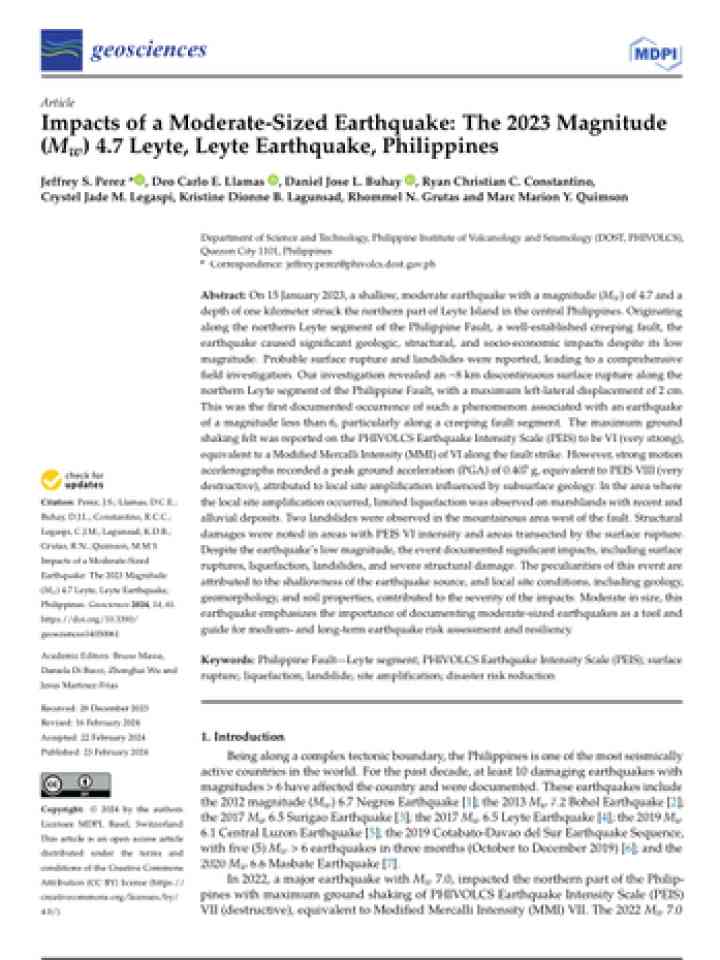Impacts of a moderate-sized earthquake: The 2023 magnitude (Mw) 4.7 Leyte, Leyte earthquake, Philippines
On 15 January 2023, a shallow, moderate earthquake with a magnitude (Mw ) of 4.7 and a depth of one kilometer struck the northern part of Leyte Island in the central Philippines. Originating along the northern Leyte segment of the Philippine Fault, a well-established creeping fault, the earthquake caused significant geologic, structural, and socio-economic impacts despite its low magnitude.
This was the first documented occurrence of such a phenomenon associated with an earthquake of a magnitude less than 6, particularly along a creeping fault segment. The maximum ground shaking felt was reported on the PHIVOLCS Earthquake Intensity Scale (PEIS) to be VI (very strong), equivalent to a Modified Mercalli Intensity (MMI) of VI along the fault strike. However, strong motion accelerographs recorded a peak ground acceleration (PGA) of 0.407 g, equivalent to PEIS VIII (very destructive), attributed to local site amplification influenced by subsurface geology.
The peculiarities of this event are attributed to the shallowness of the earthquake source, and local site conditions, including geology, geomorphology, and soil properties, contributed to the severity of the impacts. Moderate in size, this earthquake emphasizes the importance of documenting moderate-sized earthquakes as a tool and guide for medium- and long-term earthquake risk assessment and resiliency.
Explore further
